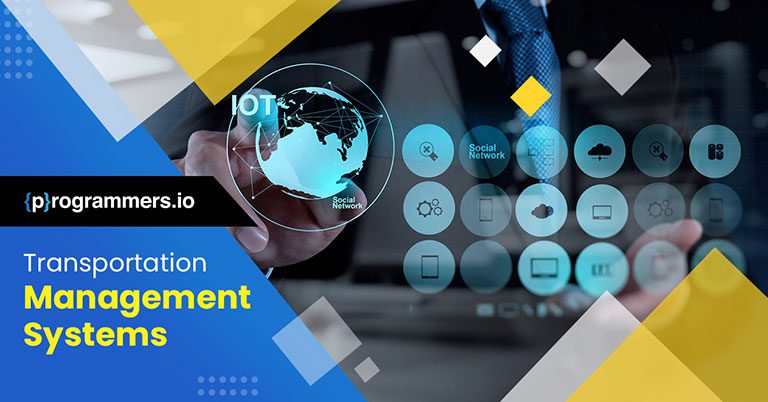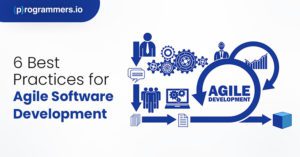Transportation Management Systems: Why Do You Need Them?
A transportation management system is an integral tool used by supply chain businesses across the globe. The software comprises multiple software applications that help manage and simplify processes across the supply chain, including the planning, scheduling, controlling, execution, and monitoring of logistics. Typical transportation management systems are either used on their own or are used as part of a broader suite of applications with innumerable benefits for the global reach of a supply chain.
The functionality of a transport management system process varies based on the objectives that businesses look to achieve through it. While some organizations focus on information sharing and business intelligence to assist decision-making, others are more inclined toward the bare minimum in inventory control, logistics management, and other order fulfillment. Full-suite systems come with all the capabilities required for handling all aspects of a supply chain management process.
In this article, we look at transportation management systems and how they can help improve operations in an organization.
Some of the critical supply chain management processes, assisted through transport management systems, include:
- Planning: Planning involves the creation of strategic plans to manage resources under a business’s control. The planning process is necessary to promptly get your product or services to customers and monitor supply chain efficiency. This includes costs and delivery of goods and services.
- Developing: You choose suppliers for the raw materials you need for a product or service during this process. Here, you build your delivery, payment, and pricing process and build strong relationships with all suppliers and partners.
- Making: This process is linked to the manufacturing side of things and involves packaging, testing, and the production of goods. The manufacturing processes streamline the product to be ready to be delivered to customers in the order size they require. Monitoring is an integral part of the mix here, as it ensures optimal results without any delays.
- Delivering: Delivery or the logistics stage deals with all steps from handling customer queries to growing the transport and distribution channel. This includes managing receipts and orders received from customers, setting up invoicing patterns, and developing a network of carriers and warehouses.
- Returning: This is usually the final stage assisted through technology and involves returning damaged goods from customers who aren’t satisfied with the quality of the work done.
Features and Benefits of a Tech Supply Chain Solution
Multiple types of supply chain management tools exist today that come with their features and applications. The most common features performed by supply chain management software include:
- Inventory Management: Supply chain tech solutions help with inventory management as they track and manage the availability of raw materials for manufacturing. The inventory management solutions provided here can also come in handy with barcode integration, asset management, and future price forecasting.
- Order Management: Software solutions can help with automating the order processing and management process. For instance, these solutions generate and track all purchase orders, schedule supplier deliveries, and set the required pricing based on product configurations.
- Logistics and Shipment Monitoring: Today’s coordination across transportation channels is necessary for businesses, and supply chain software solutions can help with that. The enhanced monitoring standard can boost customer satisfaction and enhance delivery performance. Warehouse management is also included here.
- Forecasting demand, anticipating customers, and planning all production and procurement processes accordingly are the need of the hour in future-oriented supply chains today. Efficient forecasting can limit the need to store excess goods or meet indefinite downtimes due to stock-outs.
- Return Management: Return management works to inspect and handle faulty or damaged goods and can come in handy while processing insurance claims and refunds.
Read Case Study – Freight Tracking API for Shipping Company
Advantages and Benefits of Transport Management Software
Global businesses that rely on technology for their supply chain operations can benefit from software systems. A good supply chain management software can:
- Help control and reduce the costs associated with your global supply chain
- Alleviate the risks of supply chain inefficiencies such as logistical errors and late shipments
- Improve the delivery of goods to customers, and enable better customer service standards. Customer satisfaction is eventually enhanced, and customers feel more at ease.
- Help with the decision-making and forecasting of resources
Transportation management systems can also help a global supply chain by:
- Automating all significant processes in the business, such as invoicing, order processing, and shipment tracking. Companies can save a lot of time and effort due to this automation and can reduce administrative costs as well.
- They identify all excess materials or processes without any acceptable use or need for them. Once these different processes and materials are identified, businesses can indulge in possible cost-saving measures and improve their warehousing and manufacturing efforts.
- We are improving the process of inventory management and ensuring a more effective and flawless demand planning process.
- We are improving the supply chain’s responsiveness to unforeseen events and disruptions, including staff absences, machine failures, urgent customer orders, missing goods, and human error, among many others.
- They are providing a management reporting and analysis tool at your fingertips. The information-sharing achieved as a result of a software solution can bring partners in a supply chain together and cut down on whatever silos are present inside the supply chain.
- It provides visibility across the entire network. A software solution can enhance visibility between storage, suppliers, distribution centers, and production plans. Everyone understands where the business stands and can take corrective action to remedy processes that aren’t ideal.
- Support enhanced communication and collaboration between suppliers, partners, and distributors inside the supply chain.
Do You Need Transport Management Systems?
When determining the need for a software solution in the supply chain, businesses should always:
- Map their supply chain: Mapping their supply chain would allow businesses to identify all processes inside the supply chain and what makes the chain well oiled. Usually, these separate processes are merged as one, but for a software solution, you should consider them separately.
- Measure how well each of your processes performs. There are multiple processes in a global supply chain, and once you have identified them, it is time for you to measure how well they perform. Sit down with your team and generate appropriate metrics from each process. Since the functions aren’t automated, you will probably face some delay in identifying the involved metrics and how you can measure them.
- Once you measure the performance of your processes, you should compare it with the best practices in the market. This benchmarking can help you compare yourself to others in the market and identify where you stand.
- Work out all costs associated with your supply chain. A total of these supply chain costs, including distribution, transport, inventory, and warehousing, can help your supply chain identify information relevant to efficiency.
By the end of this article, you will know more about transport management systems and how they can assist day-to-day operations in an organization. You can check our blog for more details regarding the same.
How can we help you?
We have hundreds of highly-qualified, experienced experts working in 70+ technologies.









